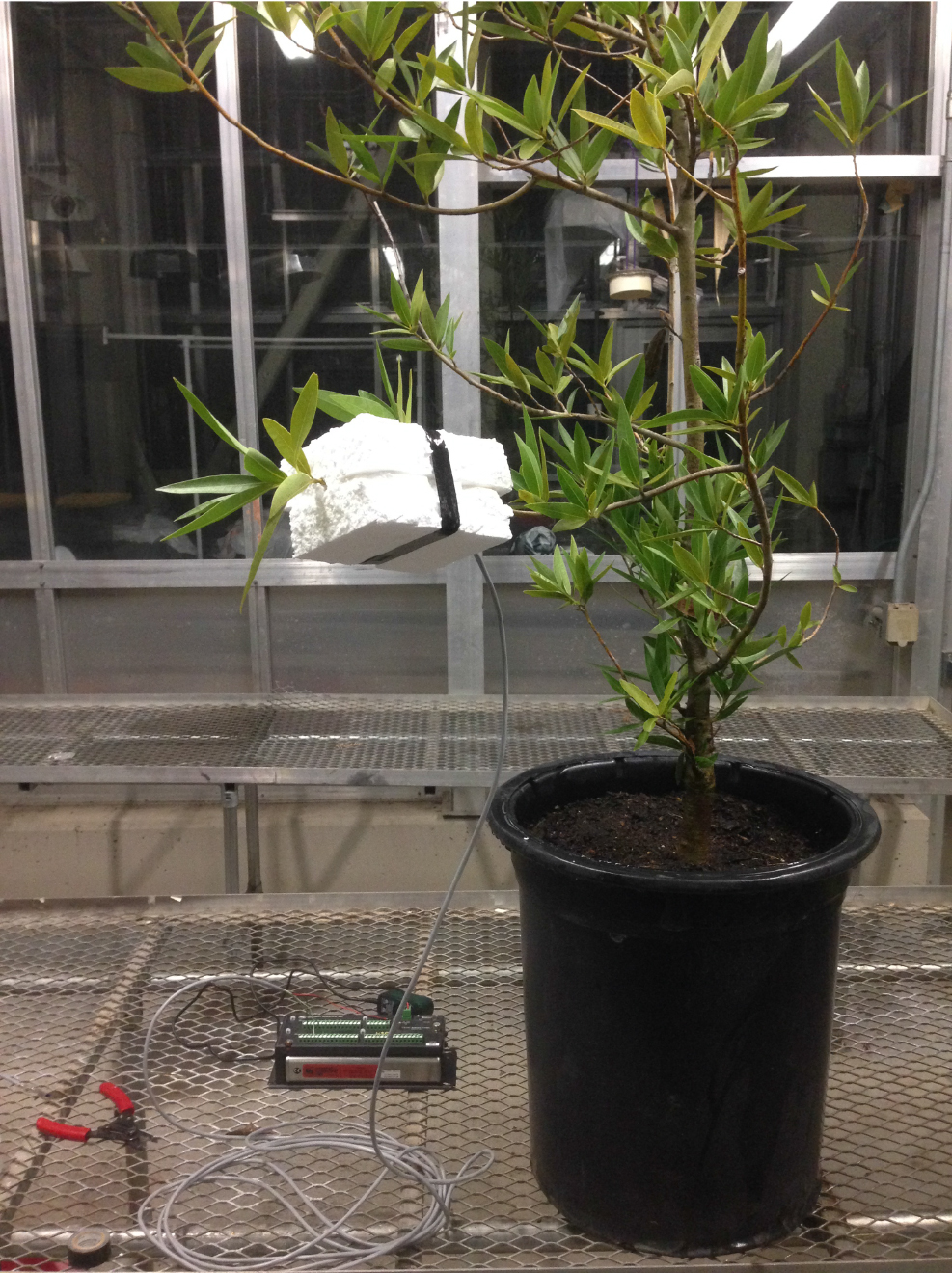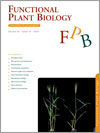- EN - English
- CN - 中文
Miniature External Sapflow Gauges and the Heat Ratio Method for Quantifying Plant Water Loss
微型外液流计和热量比值法量化分析植物水分损失
发布: 2017年02月05日第7卷第3期 DOI: 10.21769/BioProtoc.2121 浏览次数: 9643
评审: Scott A M McAdamEunsook ParkYuko Kurita
Abstract
External sapflow sensors are a useful tool in plant ecology and physiology for monitoring water movement within small stems or other small plant organs. These gauges make use of heat as a tracer of water movement through the stem and can be applied in both a laboratory and a field setting to generate data of relatively high temporal resolution. Typical outputs of these data include monitoring plant water use on a diurnal time scale or over a season (e.g., in response to increasing water deficit during drought) to gain insight into plant physiological strategies. This protocol describes how to construct the gauges, how best to install them and some expected data outputs.
Keywords: Sapflow (树干液流)Background
Sapflow technology is a tool in plant ecology that uses heat as a proxy of water flow within stems or other plant organs. Although a variety of sapflow methods have been developed (see review by McElrone and Bleby, 2011), external miniature sapflow gauges make use of the heat ratio method (HRM) (Burgess et al., 2001) for estimating plant sap velocity.
The HRM relies upon two thermocouples evenly spaced either side of a heating element along the same axis as the flow of sap (Burgess et al., 2001). (Note: Generally, water moves up through a plant from the roots towards the leaves, where it is lost through stomatal pores during evapotranspiration [E].) Marshall (1958) showed that for low rates of flow the ratio of the downstream temperature differential, T1, to the upstream temperature differential, T2, provides an accurate estimation of the heat pulse velocity, vh:
vh = α/x ln (δ T1/δ T2), in cm s-1 (Eq. 1)
Where,
α is the thermal diffusivity (cm2 s-1),
x is the distance above or below the heating element (cm).
When there is no sapflow the ratio of δ T1 to δ T2 is equal to one and thus the logarithm of the ratio of the two temperature differentials is zero. When sapflow occurs, the ratio of δ T1 to δ T2 is less than or greater than 1, with values above 1 measuring flow towards the leaves and values below 1 indicating reverse flow towards the roots.
The thermal diffusivity, α, can be estimated by recording the temperature profile of one of the thermocouples following a heat pulse under conditions of zero flow (Clearwater et al., 2009). It is proportional to the amount of time it takes for the thermocouple to reach a maximum temperature, tm, after a heat pulse:
α = x2/4 tm, in cm2 s-1(Eq. 2)
For miniature external gauges, α is a property of the gauge material and the properties of the stem with which it is in contact. A significant proportion of heat is propagated through the gauge block and α varies little between individuals of a species (Clearwater et al., 2009). α can be estimated from Eq. 2 by installing gauges on excised stems of study species and recording heat pulses with no imposed xylem flow. Thereafter α can be assumed to be constant for a species and applied in Eq. 1 for other individuals of the same species. Vandegehuchte and Steppe (2012) showed recently that thermal diffusivity, α, of woody stems may vary throughout a growing season, which affects calculations of vh. An improved estimate of α and how it varies throughout a growing season is desirable and may improve the fit between vh and transpiration (E).
Figure 1. Miniature external sapflow gauge with 10 m lead cable connected to a small branch of a potted Umbellularia californica plant and a Campbell Scientific CR10X data logger
Materials and Reagents
Note: Most of these materials can be obtained by ordering online from omega.com or by visiting local electrical supply stores.
- 2 x 4 cm of 0.15 mm (35 AWG) copper and teflon or plastic coated constantan wire
- 47 ohm pad resistor
- Fast-setting silicone
- 15 m of 4-core 0.51 mm (24 AWG) cable
- 15 m of 0.8 mm (20 AWG) constantan wire
- 10 cm of 2 mm heat shrink wire wrap tubing
- 15 cm of 1.2 cm heat shrink wire wrap tubing
- 62 Ohm resistor
- Circuit board builder
- Pluggable terminal blocks (compatible with circuit board)
- Parafilm (Bemis Company, Inc., Neenah, WI, USA)
- Polystyrene block approximately 3 x 15 x 9 cm (but could be modified depending on the size of the branch)
- Durable and reflective foil (e.g., roof insulation foil)
Equipment
- Soldering iron
- Solder
- Single edged razor blade
- Multimeter
- Data logger (e.g., CR1000 or CR10X Campbell loggers, Campbell Scientific, model: CR1000 or CR10X)
Software
- ImageJ (ImageJ 1.47v, National Institutes of Health, USA)
Procedure
文章信息
版权信息
© 2017 The Authors; exclusive licensee Bio-protocol LLC.
如何引用
Skelton, R. P. (2017). Miniature External Sapflow Gauges and the Heat Ratio Method for Quantifying Plant Water Loss. Bio-protocol 7(3): e2121. DOI: 10.21769/BioProtoc.2121.
分类
植物科学 > 植物生理学 > 蒸腾作用
您对这篇实验方法有问题吗?
在此处发布您的问题,我们将邀请本文作者来回答。同时,我们会将您的问题发布到Bio-protocol Exchange,以便寻求社区成员的帮助。
Share
Bluesky
X
Copy link











